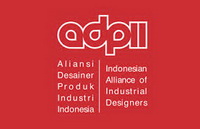Aplikasi metode Morphological Chart pada perancangan Robot Belajar Baca (ROBOCA) untuk anak usia dini
Abstract
Children are more interested in learning if these activities are carried out while playing. So in learning for early childhood children need to learn about media while playing. On the other hand, children are introduced to technology even though it is a simple technology. Play involves creativity, an independent and fun activity, and creates curiosity to explore more. This learning to read robot uses an application RFID reader, which is operated by arranging letter cards as a word, then the reading robot will evaluate whether the word is correct, and is marked by the sound of the MP3 player. The method used to design the embodiment of the form and concept of the system for this reading robot is a morphological chart. Morphological charts allow the combination of parameters with choices as alternative concepts. The alternative concept is then selected by rating the achievement of the expected performance specifications.
Keywords
Full Text:
PDFReferences
Djamal, H. (2014). Radio Frequency Identification (RFID) Dan Aplikasinya. Tesla, 16(1), 45–55.
Fardiah, F., Murwani, S., & Dhieni, N. (2019). Meningkatkan Kemampuan Kognitif Anak Usia Dini melalui Pembelajaran Sains. Jurnal Obsesi : Jurnal Pendidikan Anak Usia Dini, 4(1), 133. https://doi.org/10.31004/obsesi.v4i1.254
Herawati, L., & Pawitra, T. A. (2013). Evaluasi Data Antropometri Anak-Anak Usia 4-6 Tahun Di Jawa Timur Dan Aplikasi Pada Perancangan Fasilitas Belajar Di Sekolah. Jurnal Ilmiah Teknik Industri, 12(2), 141–151.
Nusyirwan, D., Guntara, A., & Perdana, P. P. P. (2020). Permainan Ular Tangga Berbasis Arduino UNO dan RFID Guna Mengembangkan Ilmu Pengetahuan Anak Sekolah Dasar dalam Mengenal Jenis Tanaman. Rekayasa, 13(1), 88–96. https://doi.org/10.21107/rekayasa.v13i1.5414
Piotrowski, J. T., Vossen, H. G. M., & Valkenburg, P. M. (2015). Media and Child Development. In International Encyclopedia of the Social & Behavioral Sciences: Second Edition (Second Edi, Vol. 14). Elsevier. https://doi.org/10.1016/B978-0-08-097086-8.92145-7
Poppyariyana, A. A., & Munajat, A. (2020). Pengaruh Permainan Sains Terhadap Kemampuan Berpikir Logis Anak. AWLADY : Jurnal Pendidikan Anak, 6(1), 1. https://doi.org/10.24235/awlady.v6i1.5779
Sobron, L., & Sutanto, D. (2016). Pengaruh Posisi Orientasi Objek Pada Proses Rapid Prototyping 3D Printing Terhadap Kekuatan Tarik Material Polymer. Sinergi, 20(3), 229. https://doi.org/10.22441/sinergi.2016.3.009
Usep Kustiawan. (2013). Sumber dan Media Pembelajaran Anak Usia Dinni. In Presiden Republik Indonesia.
Windayana, H. (2018). Pengembangan Media Pembelajaran Interaktif, Kreatif, Dan Edukatif Untuk Anak Usia Dini. Cakrawala Dini: Jurnal Pendidikan Anak Usia Dini, 5(1). https://doi.org/10.17509/cd.v5i1.10492
Wiwik Pratiwi. (2017). Konsep Bermain Pada Anak Usia Dini. Manajemen Pendidikan Islam , 5, 106–117.
Zaini, M. (2019). Jurnal Obsesi : Jurnal Pendidikan Anak Usia Dini Persepsi Orangtua terhadap Hadirnya Era Teknologi Digital di Kalangan Anak Usia Dini. 3(1), 254–264. https://doi.org/10.31004/obsesi.v3i1.127
DOI: https://doi.org/10.24821/productum.v5i2.6917
Refbacks
- There are currently no refbacks.
p-ISSN 2477-7900 | e-ISSN 2579-7328

This work is licensed under a Creative Commons Attribution 4.0 International License.
Like & Follow Us










